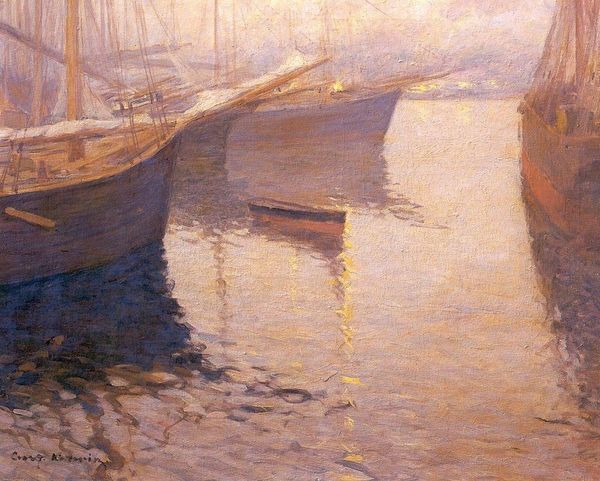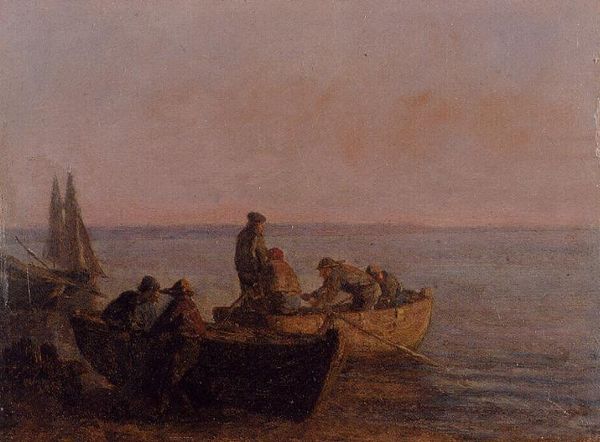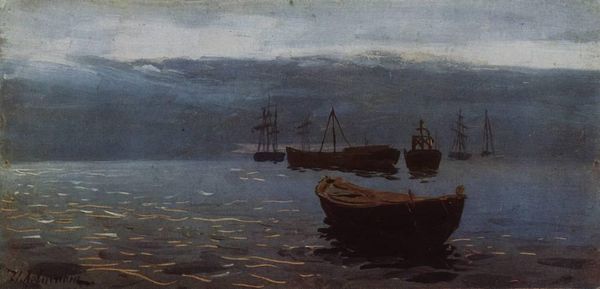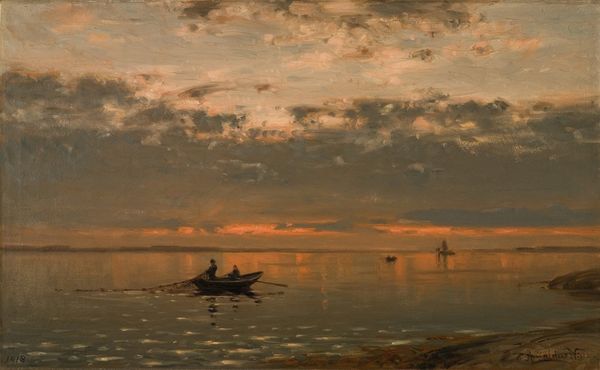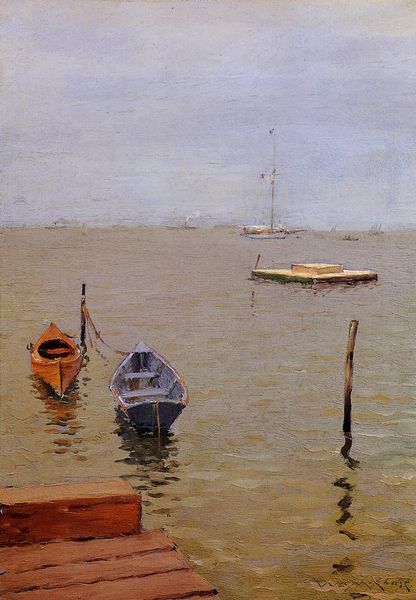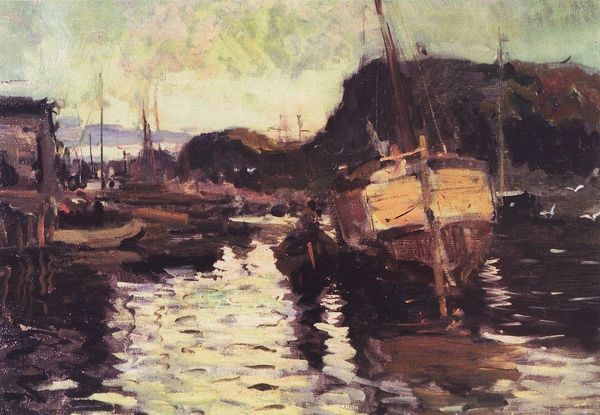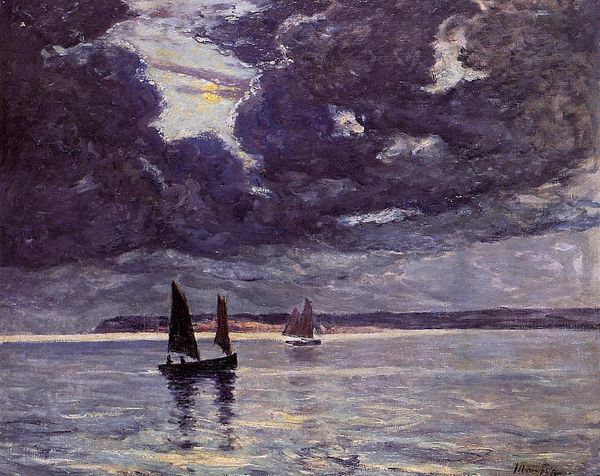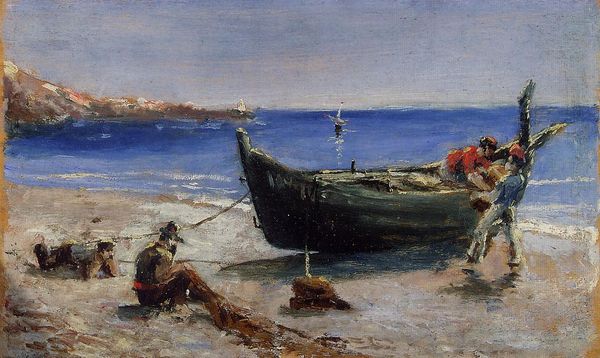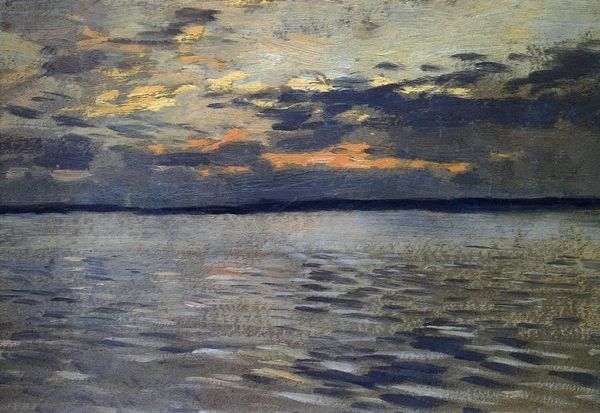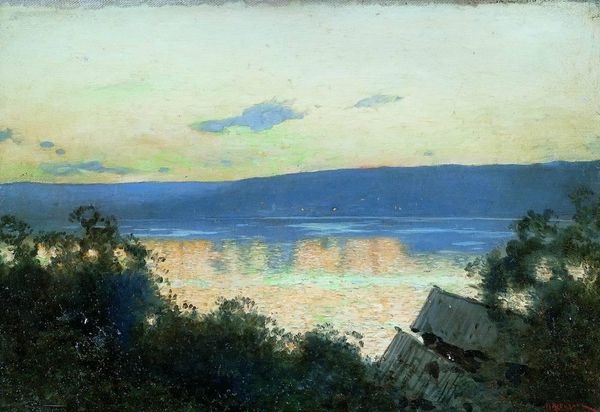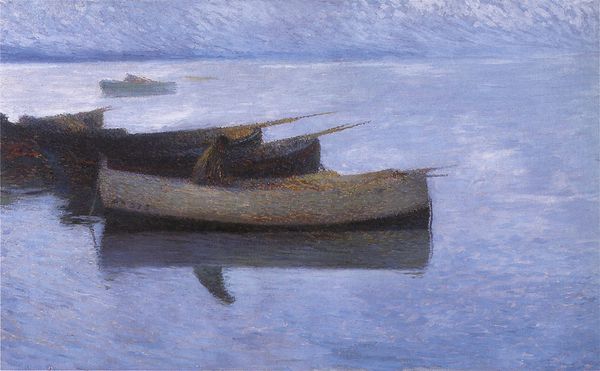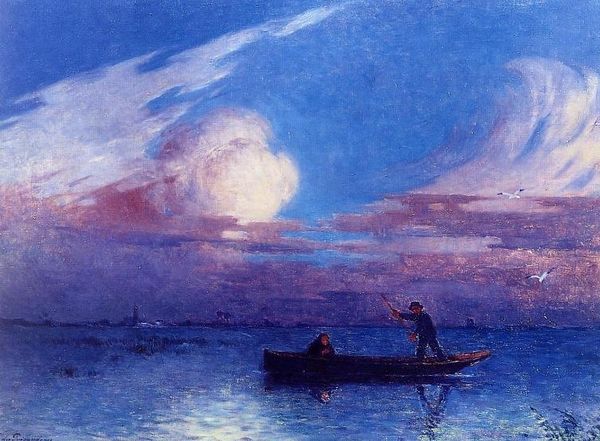
painting, plein-air, oil-paint
#
sky
#
painting
#
impressionism
#
plein-air
#
oil-paint
#
landscape
#
impressionist landscape
#
oil painting
#
water
#
cityscape
#
modernism
Copyright: Public domain
Curator: Edward Henry Potthast’s painting, titled "Along the Mystic River," presents a captivating waterside scene. What are your initial thoughts on this work? Editor: The muted colors, especially the interplay of lavenders and golds, give it a very calm, contemplative feel. It reminds me of those quiet moments at twilight. Curator: Absolutely. Potthast masterfully employs the principles of Impressionism, capturing the fleeting effects of light on the water's surface. Notice the broken brushstrokes—short, separate dashes of color—that coalesce to create shimmering reflections. The formal structure depends largely on these ephemeral gestures. Editor: Right, and I'm thinking about how Potthast might have created this outdoors, en plein air. The materiality is palpable. You can almost feel the weight of the oil paint on the canvas, mirroring the textures of the docks and boats themselves, places where the real work happens. Curator: Good point. There's a spatial ambiguity here. While there's a clear foreground and background, Potthast uses aerial perspective and tone to compress the space, emphasizing the overall unity of the scene. It invites closer inspection. Editor: It's interesting to consider the historical context too. The Mystic River area was heavily industrialized around that time. Even if we don’t know when exactly the piece was created, what about this depiction captures or omits from the labor on that waterfront? Curator: I see what you mean; instead of industrial imagery, we're offered a tranquil view. Yet even the absence of that narrative reveals a lot, perhaps suggesting the artist's intent to depict a serene retreat from urban life rather than its gritty realities. Editor: So the very absence becomes a powerful statement, consciously choosing what to represent and, crucially, what to leave unseen. I hadn't thought about it that way. Curator: Exactly. Art is a language of presence, but equally of absence. This brief exploration reveals new dimensions, offering nuanced insights beyond the surface. Editor: I agree, diving into the materiality, we unearth connections to the lived experiences of labor and nature—enriching how we perceive not just this painting, but art as a product deeply interwoven with our histories.
Comments
No comments
Be the first to comment and join the conversation on the ultimate creative platform.
